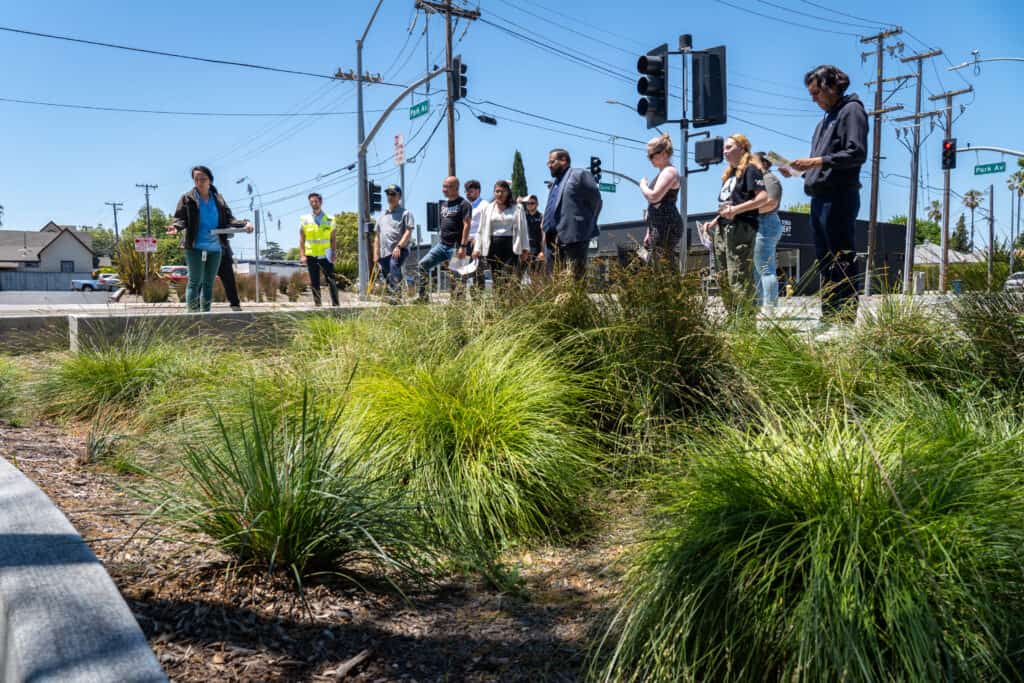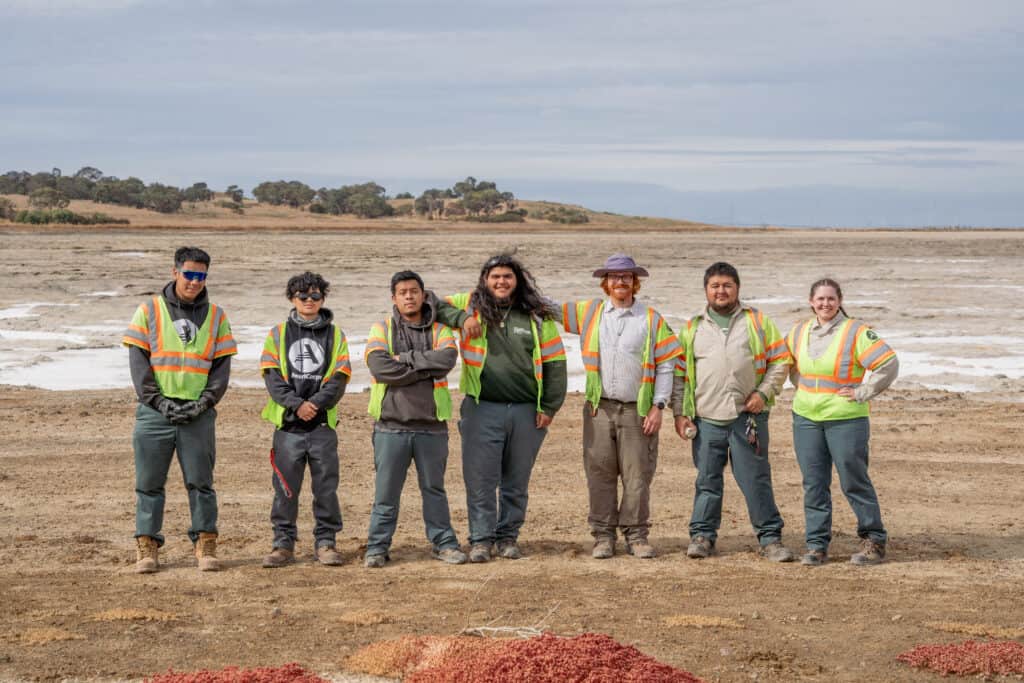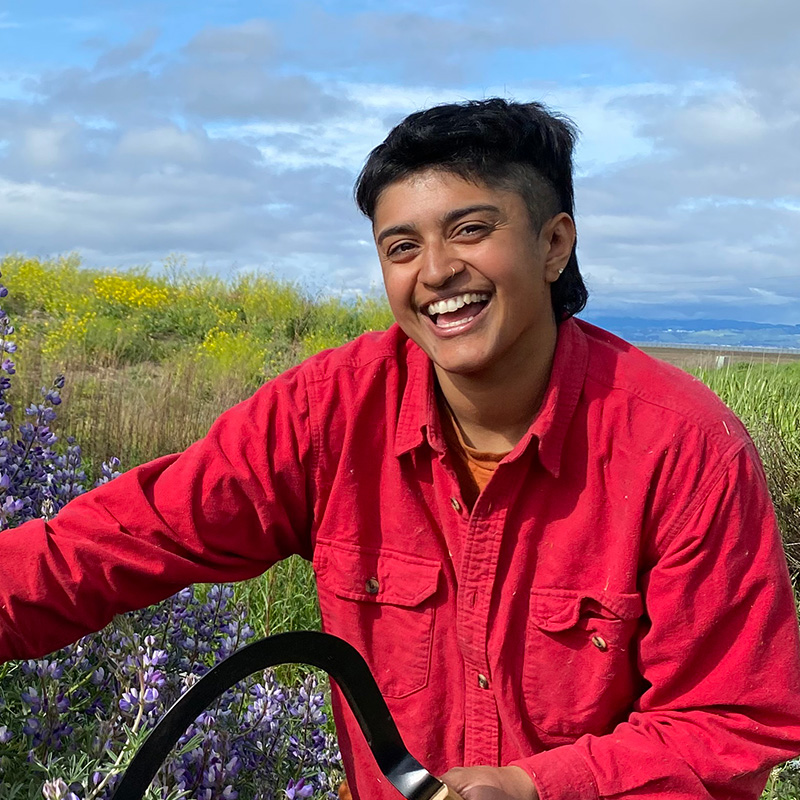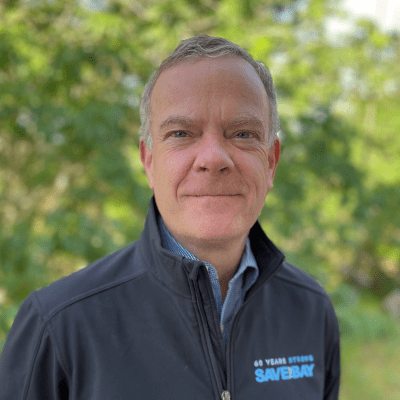Resources for advocates, planners, engineers, and other practitioners to support the design, planning, installation, and maintenance of green stormwater infrastructure.
Learn more about Green Stormwater Infrastructure (GSI)
Save The Bay Green Stormwater Factsheet: The basics of GSI
Greening Our Cities: A Save The Bay panel discussion with Assemblymember Diane Papan, Alicia Gilbreath from San Francisco Estuary Institute, and Kira Maritano from The Trust for Public Land
Local Projects
Keta Price, The Hood Planning Group: Culturally relevant community planning and engagement, including GSI By and For Community
SFEI Fact Sheet on Monitoring Results at El Cerrito Green Streets Project: A multiyear water quality performance study of a bioretention rain garden located along a major urban transit corridor east of San Francisco Bay was conducted to assess the efficacy of bioretention rain gardens to remove pollutants.
Snow Park, Oakland, CA
The Lakeside Green Streets Project and Snow Park is a 14-acre “complete street” and park expansion project that increases park lands around Lake Merritt and at Snow Park, improves water quality, calms traffic, and dramatically improves pedestrian and bicycle comfort and safety.
About Snow Park, Project Description
Lakeside Green Street Restoration Project Overview
Snow Park Lakeside Green Street Project
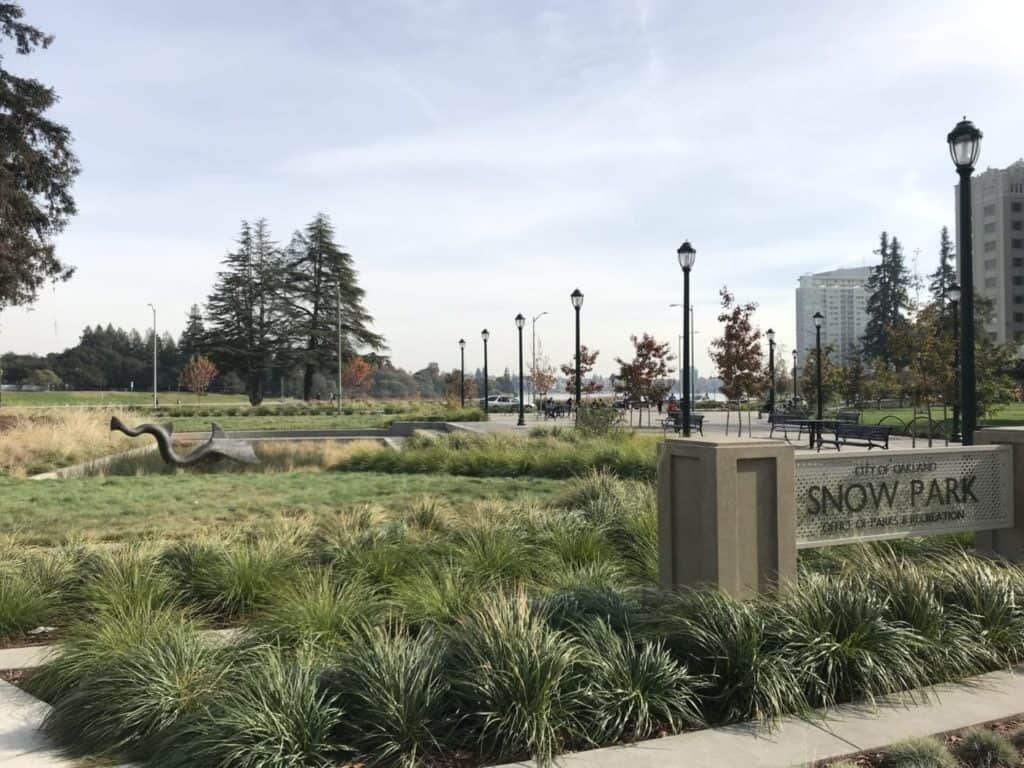
Other GSI Locations
San Mateo County Green Infrastructure Tracking Tool
Plans
San Mateo County Sustainable Streets Master Plan Plan outlining how and where to build sustainable streets in San Mateo County that integrate stormwater management with local priorities, like bike and pedestrian mobility, transit improvements, climate change adaptation, and more, based on watershed modeling and stakeholder input. The plan also includes a down-scaled climate change analysis to better understand the potential future precipitation related impacts from climate change and how green stormwater infrastructure can help adapt to changing conditions.
Technical Resources
City of San Jose GSI Maintenance Field Guide: Provides instruction, standards, and guidelines on inspection and maintenance of GSI projects. Contact Cesar.Arellano@sanjoseca.gov
Alameda Countywide Clean Water Program C.3 Technical Manual: A handbook for developers, builders, and project applicants to help include post-construction stormwater controls in their projects.
City of Oakland GSI Resources: Resources for incorporating green streets or raingardens into projects
San Mateo Countywide Water Pollution Prevention Program Green Infrastructure Design Guide: Supports jurisdictions in gradually transitioning from gray to green infrastructure over time. Includes design guidance, standards, and typical details for green infrastructure implementation in public and private projects.
Santa Clara Valley Urban Runoff Pollution Prevention Program Green Stormwater Infrastructure Handbook Guidance for implementing green stormwater infrastructure in public streetscapes, parking lots, and parks.
Santa Clara Valley Urban Runoff Pollution Prevention Program GSI Vegetation Guide: Guide to assist with care and maintenance of landscaped GSI installations, and provides guidance and information to ensure healthing and thriving vegetation.
San Francisco Public Utilities Commission GI Construction Guidebook: Resource for contractors, subcontractors, construction managers, resident engineers, inspectors and other staff involved in the construction of bioretention planters and permeable pavement.
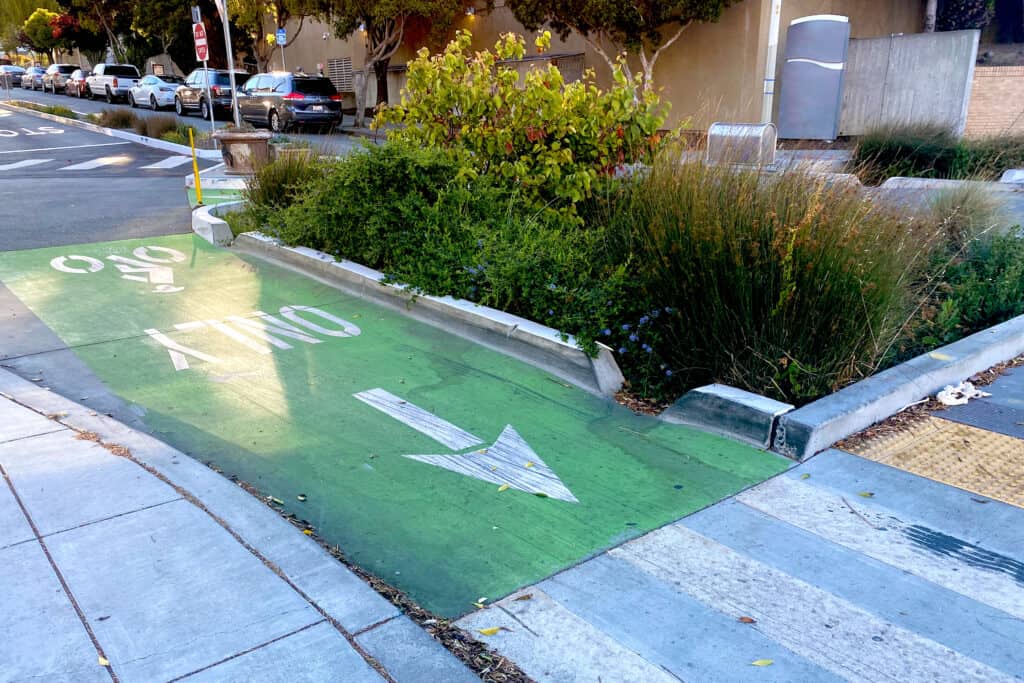
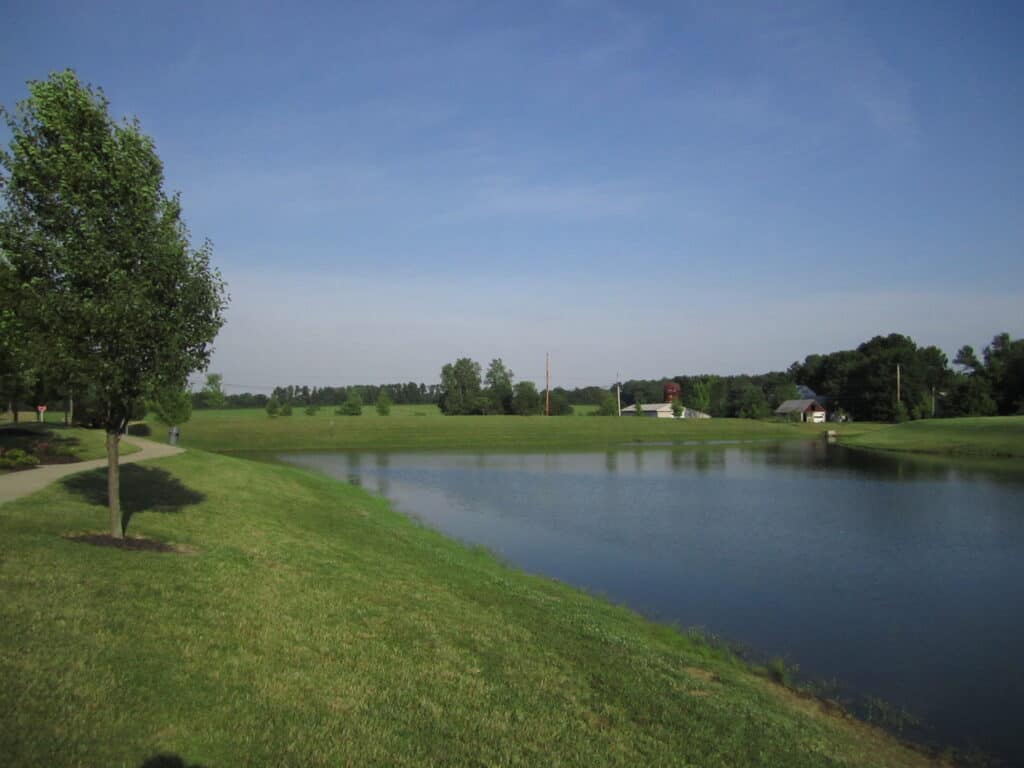
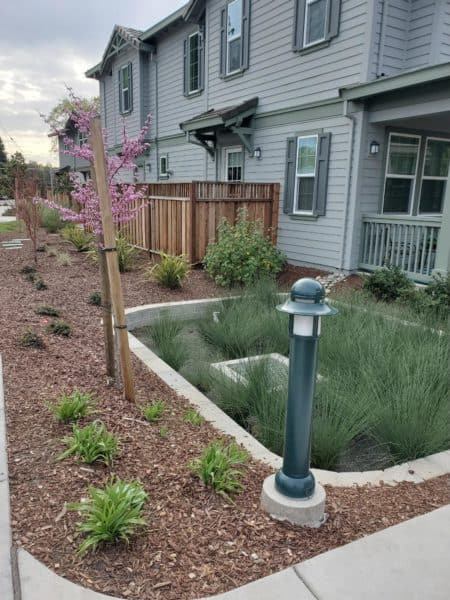
GSI Resources From Other Regions
GSI in the public right of way case studies: Alliance for the Great Lakes, in partnership with the City of Detroit Department of Public Works, identified five cities that have had success implementing green and gray water infrastructure improvements in their cities, with a focus on the public rights-of-way. Streets are ideal for green stormwater management practices because they are already designed to move water, and streets make up a vast majority of impervious surfaces in cities.
Natural Solutions Tool, Chicago, Illinois: Custom-built tool with local data that can inform decision making, reveal opportunities and priorities for advocacy and community protection, substantiate grants and investments, and strategic planning.
Denver One Water Plan: Guiding principles for a shared water vision in Denver. Using its directions, sustainable solutions can be implemented encompassing the entire water cycle through deliberate policies, consistent approaches, and streamlined inter- and intraorganizational partnerships.
Workforce Development for GSI
Greencorps Chicago: Greencorps’ mission is to promote environmental stewardship and improve the quality of life in Chicago by establishing, maintaining, and restoring natural and public spaces that are safe, healthy, and sustainable through hands-on involvement with trainees.
San Jose Conservation Corps, Resilience Corps Program: The Resilience Corps seeks to support unemployed and underemployed young adults through living-wage employment and work experience opportunities. San José has many potential jobs doing critically important work to create a more climate-smart and resilient future for our city; allowing residents to get paychecks into pockets while hugely benefitting our community at large.
